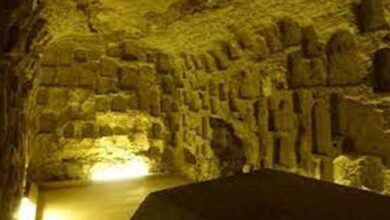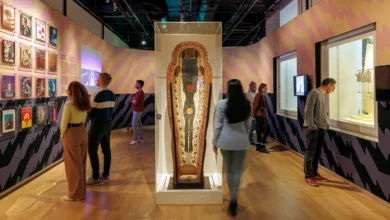Two Pharaonic tombs have been found in the region of Saqqara, south of Giza, by a Egyptian archaeological team working in the area since 1986, Egypt’s culture minister, Farouk Hosni announced. The colored tombs are some 4300 years old.
Head of the Supreme Council of Antiquities Zahi Hawass said that both tombs, found west of the Step Pyramid of Djoser, are carved into rocks and represent a father and his son.
Hawass, who supervises the team, said the father’s tomb, Sen Dwa, contains a “fake” door, which he considers to be one of the wonders of the Saqqara region. The door displays colorful paintings showing the deceased sitting at a table of offerings. Inscriptions next to the artwork suggest the man was of high rank during the rule of the Sixth Dynasty of the Old Kingdom and carried the titles of “King’s chief scribe” and “delegations supervisor,” among other honorary titles.
The burial chamber lies right below the fake door, 20 meters beneath the ground.
Going down to the tomb himself, Hawass found that it had not been robbed due to its depth. The wooden coffin in which Sen Dwa was enclosed had disintegrated due to humidity, but next to the coffin antiquities were found including a set of limestone pots that resemble ducks and contain duck bones.
The most important discovery found inside the tomb, according to Hawass, was a 30-centimeter-high limestone obelisk.
Ancient Egyptians were famous for using small obelisks in front of tombs and inside burial places annexed to queens’ pyramids. The obelisks symbolise worship of Ra, the sun god.
Nearby is the tomb of Sen Dwa’s son, Khenso, which was found to contain pictures from the Old Kingdom. Khenso held the same titles as his father.
In front of the fake door is a stone doorsill that features characteristics of the Sixth Dynasty. The archeological team also found images of the deceased in different positions above the fake door.
Translated from the Arabic Edition.




